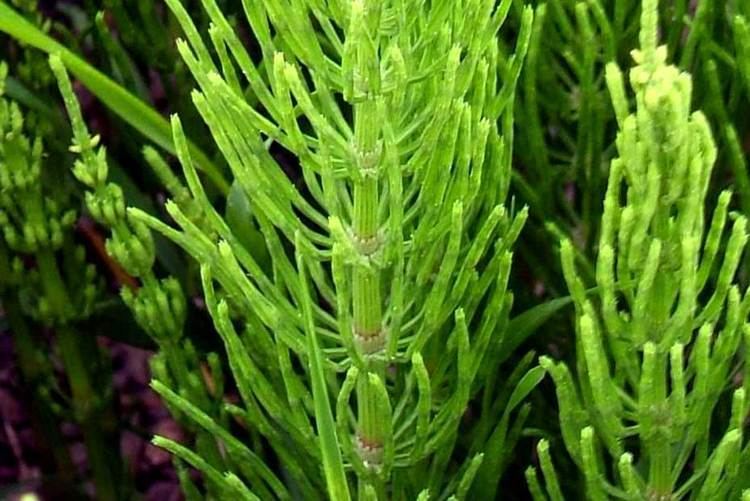Equisetum arvense, commonly called Field Horsetail or Common Horsetail, is a perennial plant native to the Northern Hemisphere. It has a distinctive, jointed, and hollow stem structure that spreads through underground rhizomes. The plant produces two types of stems:
-
Fertile stems: Succulent, pale, and about half the size of the sterile ones, appearing in early spring.
-
Sterile stems: Taller, green, and bushy, growing after the fertile stems wilt. These can reach up to 60 cm (24 inches) in height.
Interestingly, Equisetum arvense has a high diploid chromosome number of 216 (108 pairs) — nearly five times that of humans.
Parts Used:
-
Aerial parts (herbs), primarily the green, infertile stems.
Description:
This plant is naturally rich in minerals, notably silicon (10%), potassium, and calcium, which lend it several health-supporting properties. In Japan and Korea, young shoots are eaten as a springtime vegetable.
Historically, Equisetum was valued beyond medicine:
-
Pewterwort: Used for polishing pewter and wood.
-
Hurdy-gurdy maintenance: Used to clean musical instrument wheels.
-
Biodynamic farming: An ingredient in “silica” soil preparation to combat moisture-related fungal issues.
In polluted areas, it may even synthesize nicotine.
Constituents:
-
Silica (very high content)
-
Alkaloids (including nicotine)
-
Potassium
-
Calcium
-
Other minerals
Medicinal Uses:
Equisetum arvense is known for its astringent, diuretic, and tissue-repairing abilities. Key uses include:
Internal uses:
-
Kidney and bladder ailments
-
Cystitis and urethritis
-
Prostate issues
-
Bleeding within the urinary tract
-
Enuresis (bed-wetting) in children
-
Gastrointestinal disorders
-
Internal bleeding
External uses:
-
Wound healing
-
Chilblains (cold-induced skin sores)
-
As a clotting agent for cuts and nosebleeds
Additional Properties:
-
Anodyne (pain-relieving)
-
Anti-haemorrhagic
-
Antiseptic
-
Carminative (relieves flatulence)
-
Diaphoretic (induces sweating)
-
Galactagogue (promotes milk production)
-
Haemostatic (stops bleeding)
-
Vulnerary (heals wounds)
The plant’s green sterile stems are most potent when fresh but can be dried for later medicinal use. Occasionally, even its ashes are employed for therapeutic purposes.
Speech Disorder
A speech disorder, also known as a speech impairment...
ADHD
Attention-deficit / hyperactivity disorder (ADHD) is a...
Cerebral Palsy(CP)
Cerebral palsy (CP) is a group of neurological disorders...
Cancer
Cancer is a broad term for diseases where cells...




